4|d| Laser cut¶
I wanted to explore laser cutting typographic data.
I first experimented with a textile we had at the lab which was synthetic. The result was great but I was frustrated about the synthetic textile.
So I though I could use a textile that is harden by some biomaterial, and will not fray once cutted by the laser. I first tried to apply the bio foil recipe of gelatin to a silk textile but the result is not great, not flat enough. --I had a cotton textile by starch -
Also vector files Dealing with typographic vector.
typography¶
The laser file with typography is something I had to deal with. Also I had selected a typography sans-serif with clean lines, the counters of the typography is something that prolonged the time of laser cutting. For an A4 format the laser cutting was 1H30 at least. All the lines inside the counter where not something that was usefull to cut but part of the typography vectorisation. the laser cuts the outline of the numbers. For some numbers it cut twice for nothing as it comes of : The 0 - 9 - 8 - 6 - 4 numbers are the ones with counters.
I then dowladed a typography as stencil, so the inside counters will not fall of. but the time is almost the same. (Allerta stencil - Sans Klein Cut - Stencilia are some of the typography I tried)

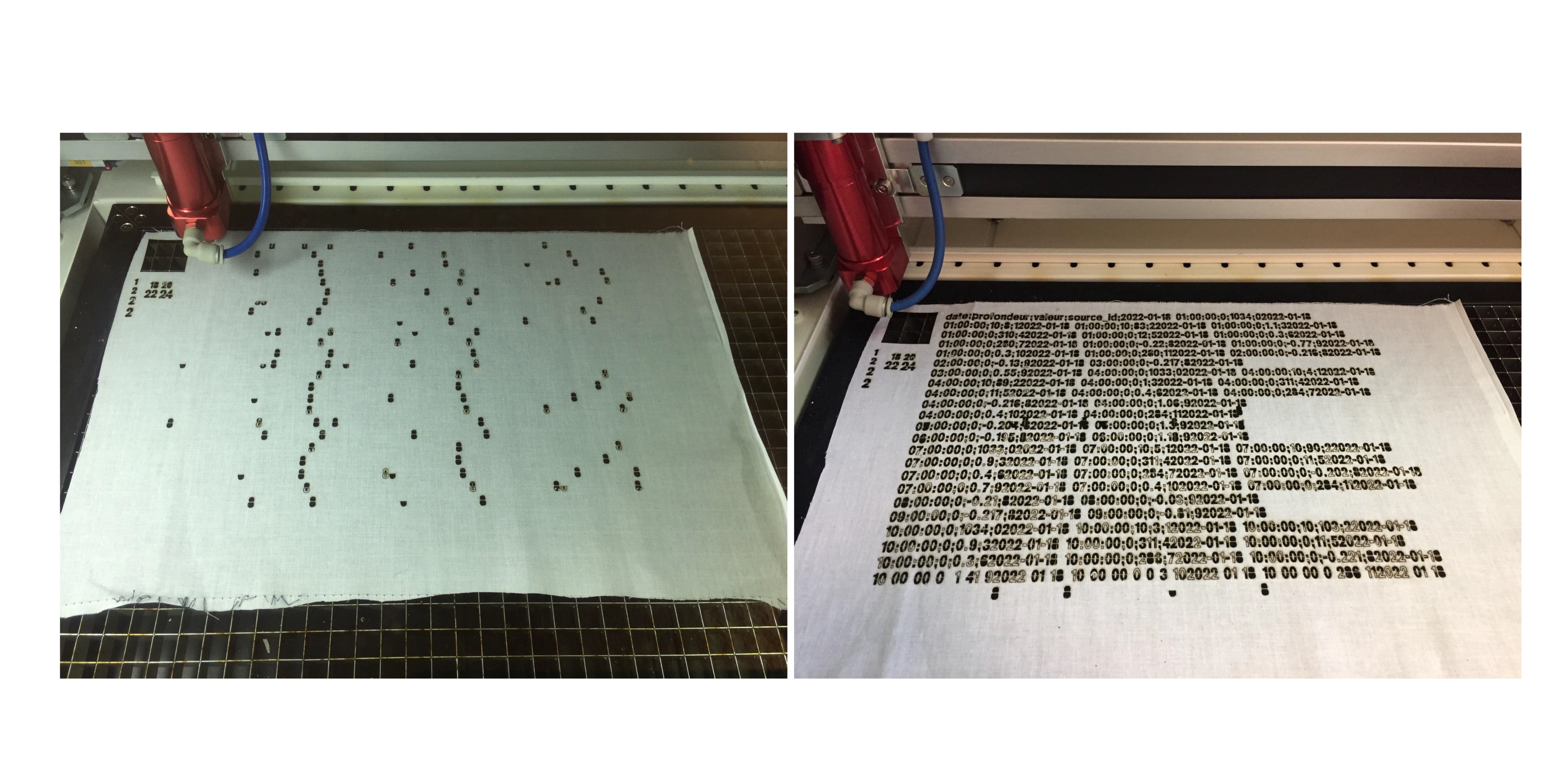
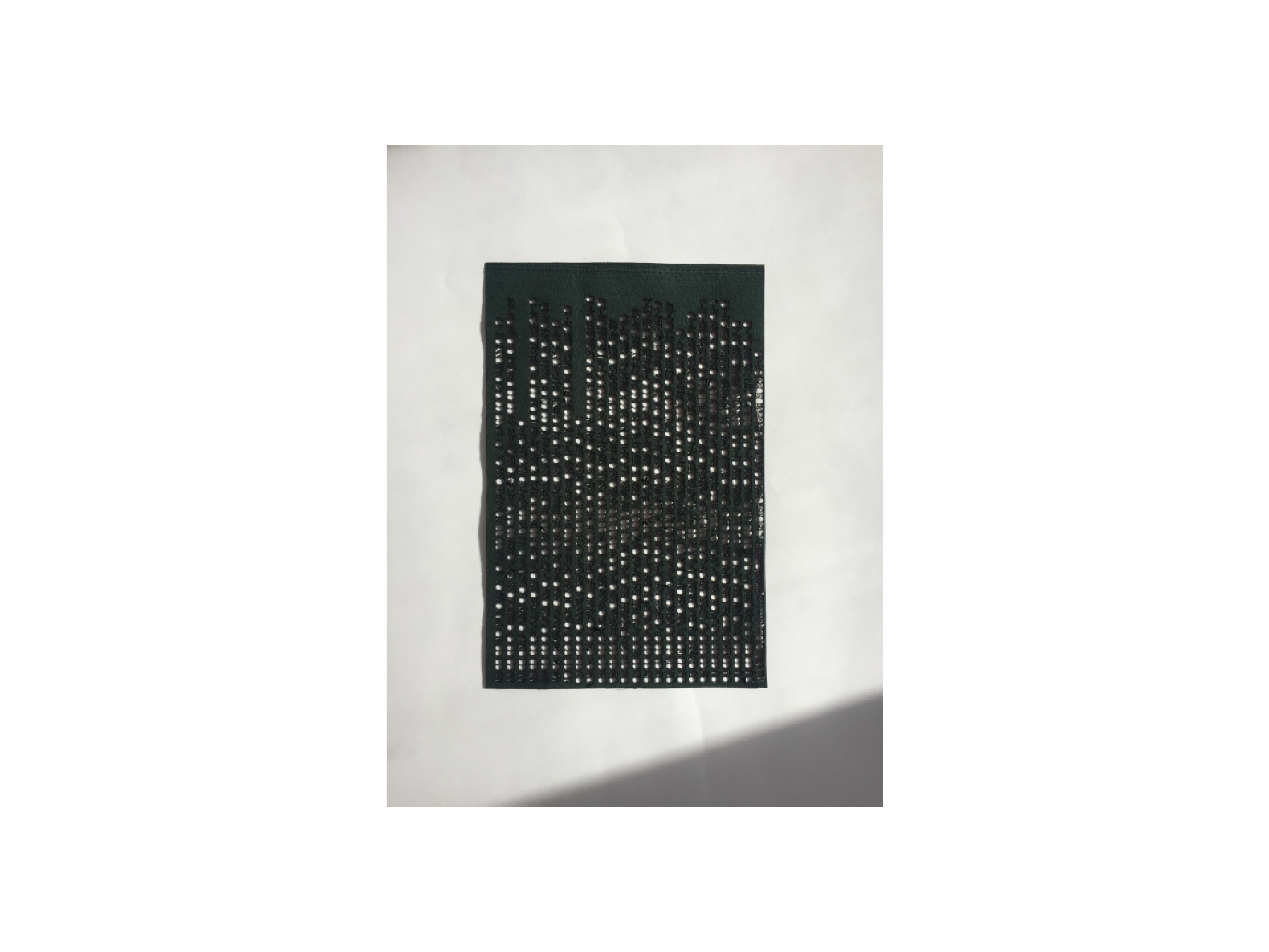
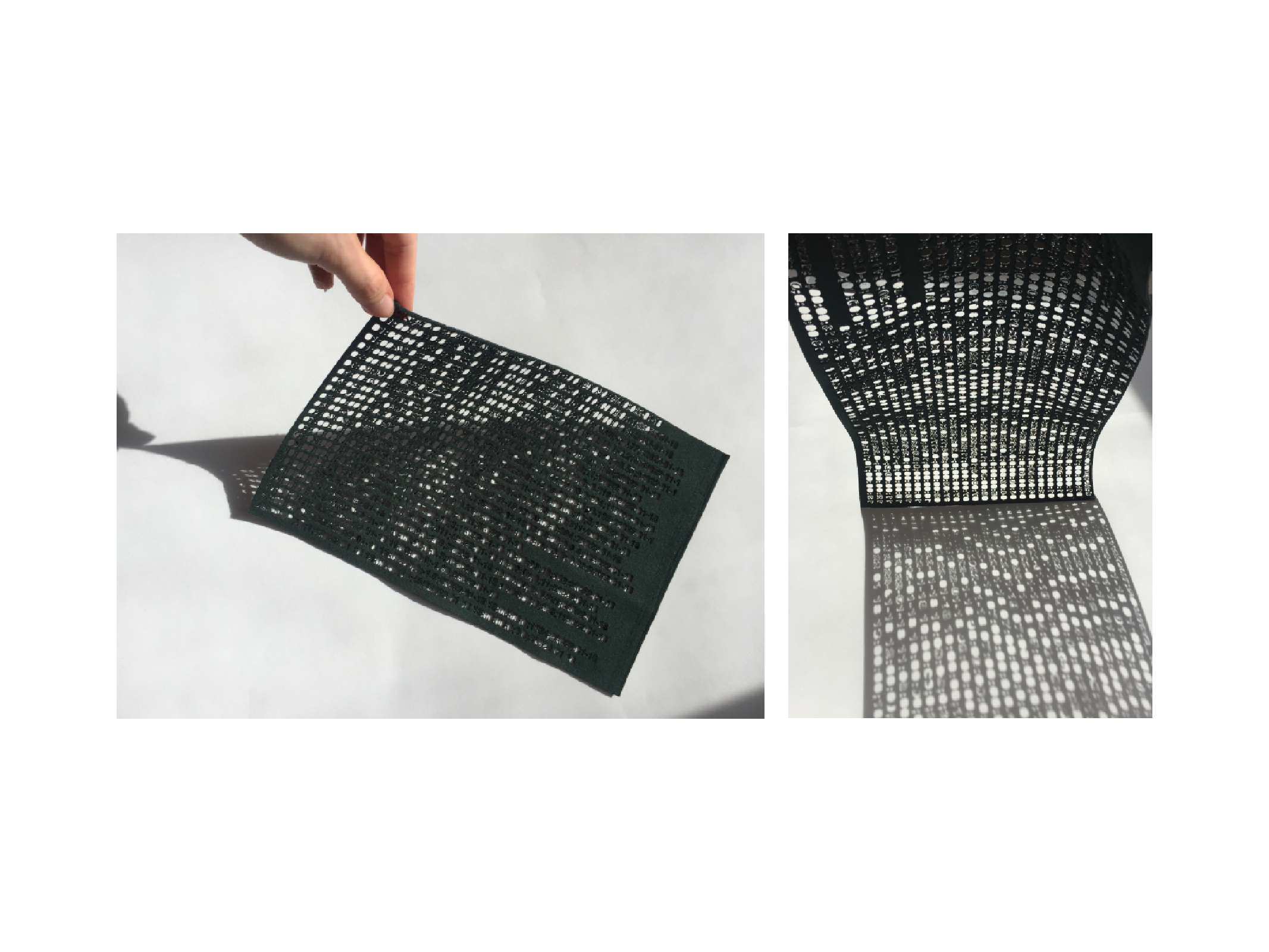
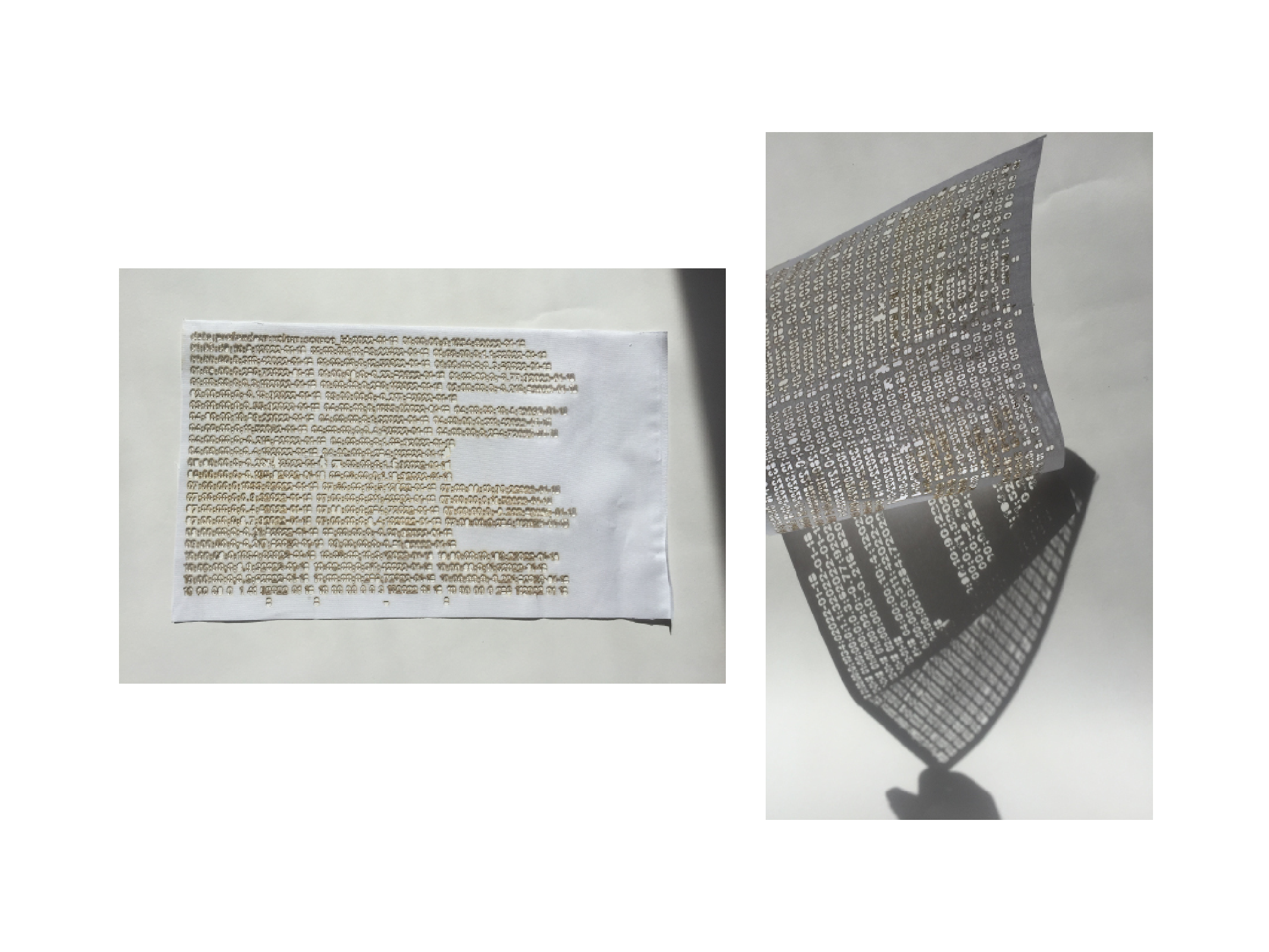
Developing a technique of biomaterial textile to lasercut natural fabric.¶
As I wanted to be able to cut natural fabric on the laser machine but a fabric with edges that will not fray once cuted. With edges cauterized once cut.
For that I thaugh I could apply a coat of biomaterial recipe onto the fabric before cutting it:
First Attempt:
-On silk fail-
FIRST TRY: Deeped derectly in the pan mixed - until wet - then put it on the drying rack.
SECOND TRY : Then applied into the fabric with the spatula onto a plastic board.
ALL FAILED THE TEXTILE WAS NOT FLAT ENOUGH :
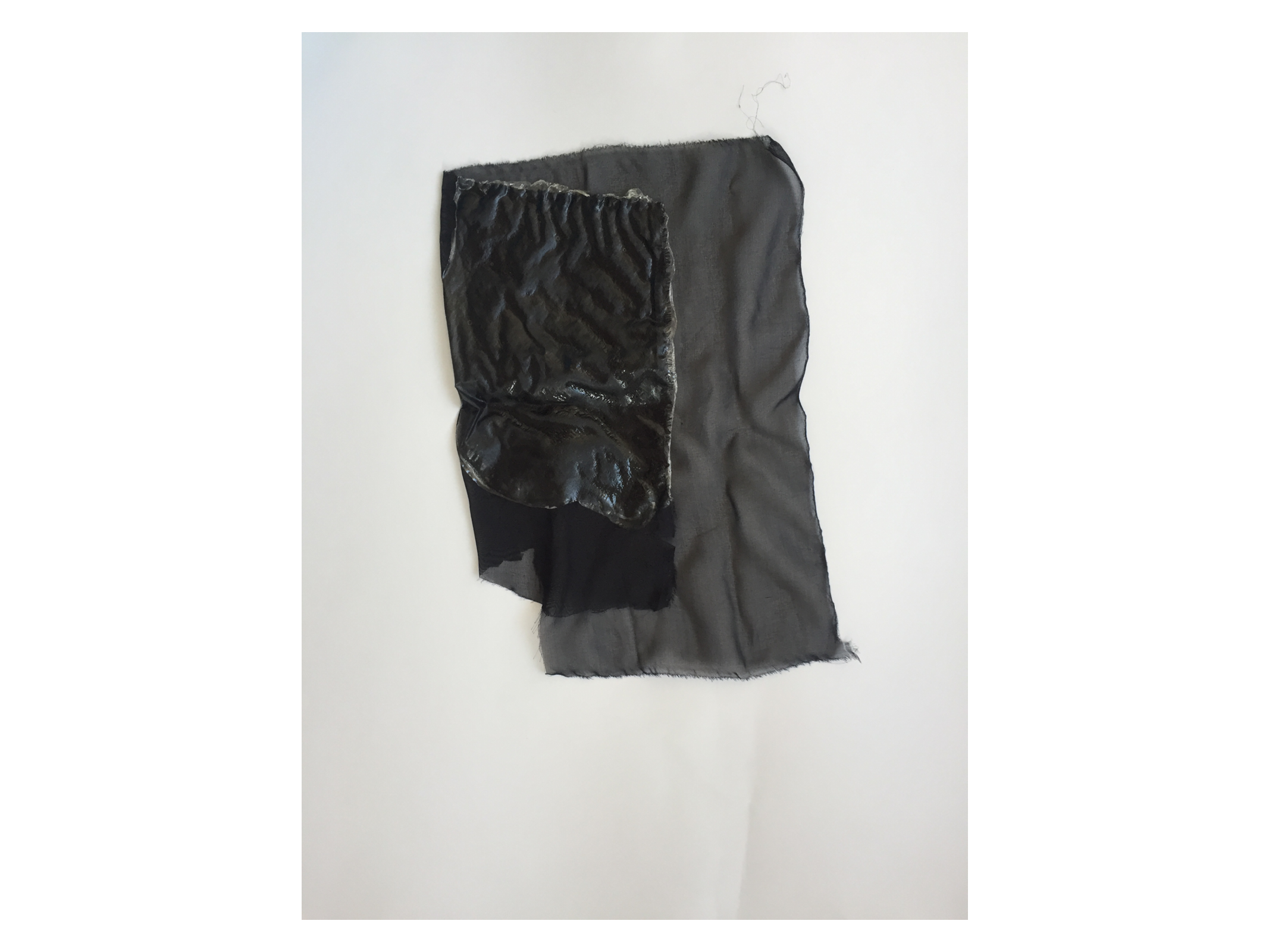
Then I got inspired by the Japanese technique. And book binding techniques that glued textile in the book cover
https://www.youtube.com/watch?v=xC6p63xnSj0 https://www.youtube.com/watch?v=RvMSRgpnpi0 https://www.youtube.com/watch?v=SBv9_Gkfop0
Test with several textiles
organza silk - Biofoil - coton - with gold leaf - Then laser cut

Coating natural fabric before laser cutting¶
Recipe for methylcelluloce bio-plastic:
-
Water 600 Milliliter (mL) - or for 200g
-
Methylcellulose 31 Gram (g) - or 10,3
-
Glycerol 6.37 grams - or 2,12 g
https://materiom.org/recipe/600
Once the bioplastic is ready:
Use a board.
Apply thin coat of the biomaterial on the board
Place the textile - without airbubble from center to exterior
Apply the biomaterial with a brush from center to exterior